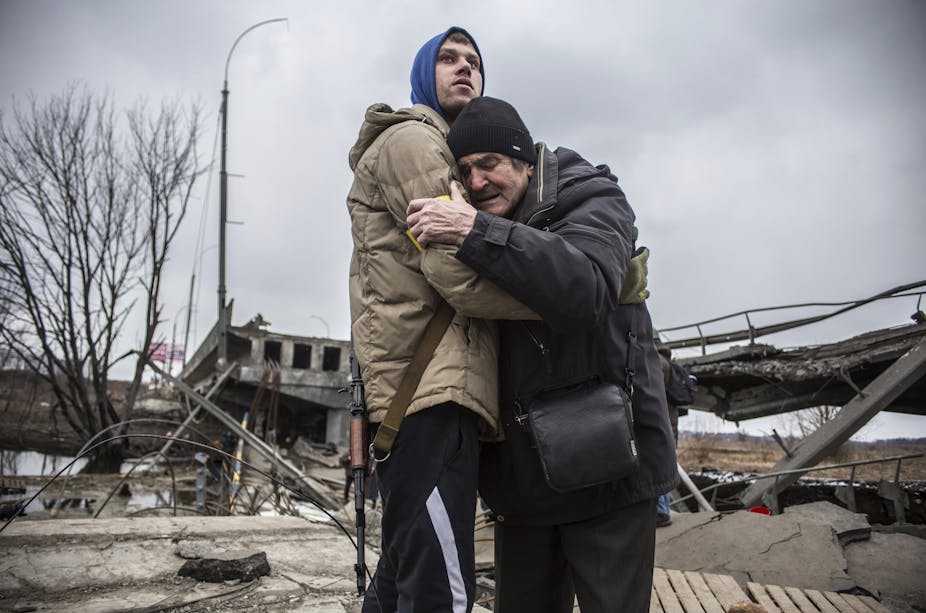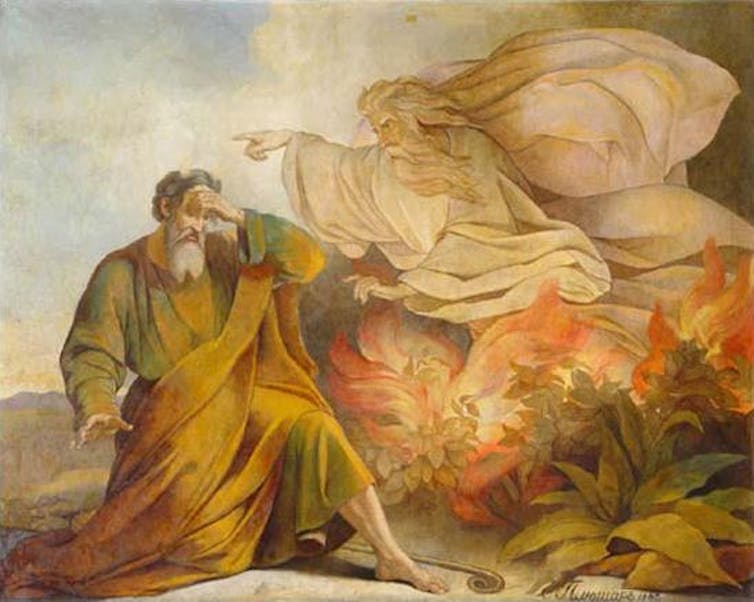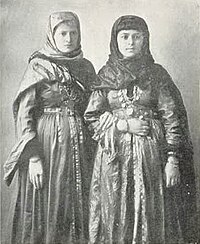How can fascism be only "right-wing" if the very concept of left vs right is just arbitrary nonsense?
Why then do you keep using the term 'lefties'?

How can fascism be only "right-wing" if the very concept of left vs right is just arbitrary nonsense?
Ehh - there is no Jewish Race - like there is no Christian Race - nor Muslim or Buddhist Race - for they are classified as religions - and by now we should all know that someones life mattering due to how much melanin they posses - was a Very successful grift in recent years - netting certain individuals millions of dollars -
ThEy HaD a MaScOt!!

The number of people parrotting Putin's hateful propaganda in this thread is very depressing. To paraphrase an old Russian joke, a person can only be any two of the three things: intelligent, honest, a Putin apologist. Take your picks.
 What classic literature knows about refugees fleeing persecution and war
What classic literature knows about refugees fleeing persecution and war




 the unamerican american
the unamerican american Why is the EU now recovering temporary protection with the Ukrainian population?
Why is the EU now recovering temporary protection with the Ukrainian population? We're leaving to walk around town
We're leaving to walk around town Habermas and the right of asylum and migration
Habermas and the right of asylum and migrationJews are Semites, like Arabs. That is a race. There is also a religion practiced by Jews.
Another Nazi sympathizer crying over number of people not subscribing to the NATO propaganda narrative.
Jews are Semites, like Arabs. That is a race. There is also a religion practiced by Jews.
 Isaac Asknaziy, Portrait of an Ashkenazi Elder, 1902. [SUP][ 1[/SUP] ]
Isaac Asknaziy, Portrait of an Ashkenazi Elder, 1902. [SUP][ 1[/SUP] ] Sephardic Jew: Maimonides .
Sephardic Jew: Maimonides . Falasha infant.
Falasha infant. Young Jewish women from the Caucasus.
Young Jewish women from the Caucasus.Since you clearly don't know what "Nazi" means, I'll give you the benefit of the doubt and consider you an honest idiot.
These people are self proclaimed nazis and wear nazi badges. Not like the maga hat wearing people you guys called nazis the last 5 years.
"Ethnic divisions of Judaism"
different ethnicities of the jewish people
Jewish ethnic divisions refer to the various world Jewish communities that can be distinguished within the Jewish people . As Judaism is both a culture and a religion, not all Jewish communities share identical cultural, religious, culinary, linguistic, etc. customs. One and the other are distinguished by small local differences (dress, food, etc.), and in a few ways of interpreting some precepts (for example, prayers). Differences in the way of vocalizing Hebrew are also appreciated. There are over 71 different identified ethnic types among the Jews.
Ashkenazi Jew
Jewish family from Cochin, India
Samarkand Jewish teacher and schoolchildren
Chinese Jews
Israeli soldier, Asael Lubotzky , wearing his phylactery
Judeo-Kurdish youth
Inside the Jewish peopleEdit
The main groups within the modern Jewish people are three: the Ashkenazim , whose typical language is Yiddish ; the Sephardim , whose typical language is Ladino ; and, to a lesser extent, the Mizrahim whose language is often Arabic . These languages are used in addition to Hebrew , which is the main prayer, writing and reading language of the Jewish people.
AshkenazimEdit
Main article: Ashkenazi
Isaac Asknaziy, Portrait of an Ashkenazi Elder, 1902. [SUP][ 1[/SUP] ]
Ashkenaz is the name given by Germany to Jews, and Ashkenazi ("German") is the name originally given to Jews in Germany. Their language is Yiddish , which is a Germanic language with Hebrew and Slavic influence. They mainly inhabited Germany , Poland , Ukraine and Russia . Those who have roots in the following European countries are not usually Ashkenazim : the Iberian Peninsula, and regions of Italy, Greece, Turkey and the Balkans.
SephardimEdit
Main article: Sephardic
Sephardic Jew: Maimonides .
Sepharad is the Hebrew name for what we know as Spain . Sephardi means "Spanish" in classical Hebrew and is the word to designate the Jews of Spain and Portugal . They made great contributions to Hispanic culture, but were religiously expelled from the peninsula in 1492. The descendants of these Jews continued to be called Sephardim , Sephardim, or Sephardim, no matter where in the world they were born. Their language is Judeo -Spanish , which was, at first, a dialect of Castilian Spanish , but evolved differently from Standard Castilian.
However, their expulsion near the beginning of the 16th century led to emigration to the Spanish and Portuguese domains, but also to the Dutch and English colonies (including the future United States). Most of them, mainly in Spanish and Portuguese America, converted and were assimilated into the local population, due to the subsequent implantation of the Inquisition in those territories.
In 1924, General Primo de Rivera granted Spanish citizenship to Sephardic Jews for "historical reasons", which saved many lives during World War II . A very clear case was that of the diplomat Ángel Sanz-Briz (charge d'affaires of the Francoist embassy in Budapest, Hungary), who saved thousands of Jews from the Holocaust in Hungary , saying that Sephardic Jews were Spanish citizens and therefore had support of his government, although to save lives many non-Sephardim were passed off as Sephardim. George Perlascahe continued his work during the absence of Sanz-Briz (posing as a consul, when in fact he was not). Both received the Righteous Among the Nations Medal , and have their tree next to Oskar Schindler 's on the Avenue of the Righteous Men in Jerusalem .
The Sephardim emigrated in the 20th century mainly to Israel, France, the United States and Latin America, with Argentina standing out; most came from North Africa, Turkey and the Balkans.
Law 12/2015, of June 24, regarding the granting of Spanish nationality to Sephardim from Spain, agreed to grant Spanish nationality to descendants of Sephardim who could prove their origin, demonstrate a special relationship with Spain and prove knowledge of the Spanish language and culture. Law 12/2015
Mizrahim or edot hamizrajEdit
Main article: Mizrahi
Mizrahi or mizrajim is the name given to the Jewish communities that immigrated from the countries of the Middle East , notably from Yemen , Iraq , Persia , or Historic Palestine . Many mistakenly call them Sephardim within Israel itself, although they have nothing to do with the Iberian Peninsula. This confusion derives from the fact that the Sephardic style of liturgy, its laws and customs had a significant influence in those regions after the expulsion from Spain and Portugal. The correct term to denominate them in Hebrew is Edot hamizraj(communities of the East). They take their interpretation of the precepts from the Babylonian rabbinical schools . They are the Jews of the Arab world .
Groups of smaller numberEditThese groups are inferior in number to the "Germans" and "Spanish" or "Orientals" but they are still important for the people of Israel.
syrian jewsEdit
Main article: Syrian Jews
The Syrian Jews ( Hebrew : יהודי סוריה) ( Arabic : يهود سوريون) derive their origin from two groups: those who inhabited the region of present-day Syria since ancient times and the Sephardim who fled to Syria after the expulsion of the Jews from Spain in the year 1492. There were large communities in Aleppo and Damascus for centuries, and a small community in Qamishli, on the border with Turkey , near Nusaybin. In the first half of the 20th century , a large percentage of Syrian Jews immigrated to the United States , Mexico , Central America , Argentina, Brazil and Israel . Most of the remaining Jews emigrated in the twenty-eight years following 1973 , due in part to the efforts of Judith Feld Carr, who claims to have helped some 3,228 Jews leave the country; emigration was officially allowed in 1992 , with the condition that they would be given permission to emigrate as long as it did not go to Israel. The largest Syrian Jewish community is in Brooklyn , New York and is estimated to number about 7,000 people. There are smaller communities elsewhere in the United States and in Latin America .
Teimanim or YemenitesEdit
Main article: Yemenite Jews
Some consider the Teimanim to be part of the Mizrajim or Eastern Jews, since they inhabited Yemen (meaning "far south"). They are the only ones who preserve the tradition of reading the Torah in the synagogue in Hebrew and in the Aramaic translation . Yemen is located in the south of the Arabian Peninsula and is the cradle of the Teimanim and in Hebrew Yemen is called Temán. When Saladin was sultan, the Jews of Yemen began to have a religion that syncretized Judaism and Islam. This situation worried Jacob ben Nathanael al-Fayyumi who wrote to Rabbi Moshe ben Maimon , known as Maimonides. The great Maimonides answered him in an epistle entitled Iggeret Teman (The Epistle to Yemen ). This letter had a great impact on Yemenite Jewry and this new religious movement was stopped.
Beta IsraelEdit
Main article: Beta Israel
Falasha infant.
Beta Israel (House of Israel), incorrectly called falashas , are Jews from Ethiopia . Physically they resemble Ethiopians and speak the Amharic language . Its origin is not very clear, it goes back to ancient times and there are no exact records, rather legends and speculations. Some theories about its origin are:
Maghreb or MoroccanEdit
- They could be sons of Menelik , alleged son of King Solomon with the Queen of Sheba and of the converts that there were after his conversion to Judaism.
- Some say that they are children of African natives and members of the tribe of Dan who settled in Kush (Ethiopia).
- Some say that they are children of Jews with blacks, coming from different times and circumstances such as: merchants, exiles, travelers, etc.
- They could be converts, that is, blacks who, seeing their Jewish neighbors, convinced themselves that this was the way of life they needed.
They are Jews who traditionally lived in the Arab Berber Maghreb (Al-Maghrib means the West in the Arabic language ). Sometimes considered Sephardim, they settled there long before the expulsion of the Sephardic Jews from Spain, most notably in Morocco . The Sephardic Jews arrived after being expelled from Spain and had greater resources and were more sophisticated than their Maghreb brothers, thus the Maghreb assimilated into the Sephardic community. Today, Moroccan Jews consider themselves Sephardic.
Gruzim or GeorgiansEdit
Young Jewish women from the Caucasus.
They belong to Georgia , in the Caucasus , gruzim comes from the Russian term: Грузинские евреи ( Gruzinskie Yevreyi , Georgian Jews). The Georgian name for the community is Huria (ჰურია) or Ebraeli . Some consider them Ashkenazim. It is not known how or when they arrived in Georgia, but what is indisputable is that they are one of the oldest communities of the Jewish diaspora around the first century of the common era.
Jews in IndiaEdit
Main article: Judaism in India
There are several traditional groups in India like:
romaniotesEdit
- Baghdadis : They are Jews originally from Baghdad , Iraq .
- Bene Ephraim : These Jews speak the Telugu language .
- Bene-Israel : These Jews call themselves "The Children of Israel".
- Bnei Menashe : These Jews call themselves "The Sons of Manasseh". The Bnei Menashe converted en masse upon discovering their Jewish past. They believe they are members of the Ten Lost Tribes of Israel. Many were Christians and abandoned Christianity . Their leader had a dream where God told him that they should return to Judaism and the Land of Israel , his greatest desire is to be able to return to the Promised Land .
- Cochin Jews : They are Jews residing in the city of Cochin , in the state of Kerala .
Main article: Romaniotes
They are the Greek Jews, with a tradition in Hellenic territory of more than two thousand years. They are not to be confused with the Sephardim who immigrated to Greece from Spain after the 1492 expulsion . They follow the tradition of the Jerusalem Talmud , rather than the Babylonian Talmud, and their language is Yevanic .
italkimEdit
The Bené Roma or Italkim (Italian in Hebrew) of Italy. Currently there are more than 50 thousand and have a presence of two thousand years. Their religious customs are a mix of Ashkenazi and Sephardic . Physically they are more similar to Ashkenazis.
Persian or ParsimEdit
Main article: Persian Jews
They are the Jews whose mother tongue is Persian and they arrived in Persia approximately 27 centuries ago. This occurred from the first Jewish diaspora. The largest concentrations of parsim ('Persian' in Hebrew) are in Iran , the United States , and Israel .
Bukharian JewsEdit
Main article: Jews of Bukhara
Bukharian Jews (Hebrew: יהודיאני בוכאראי), also called Bnai Israel, are Central Asian Jews who speak Bukharian, a dialect of Tajik. Its name comes from the former Emirate of Bukhara , a Central Asian state that once had a sizeable Jewish community. Since the dissolution of the Soviet Union , the vast majority have emigrated to Eretz Israel or the United States (especially New York State), while others have emigrated to Europe or Australia .
AbayudayaEdit
Main article: Abayudaya
The Abayudaya are a community in Uganda that has adhered to Judaism since the 1920s. Since 2002 they have been officially converted.
Asian JewsEdit
It is quite positive, an opinion that among the Wa tribe and Silla there were Jews from Asia who came to Japan from the third century to the known seventh century and became known as the Hata tribe. Some consider that they belong to a part of the ten lost tribes of Israel, specifically the tribe of Dan and the seafarers of the tribe of Zebulun. In 1910, there were 2,000 Jews in China and Japan.
ChuetasEdit
Main article: Chueta
The chuetas, from the Catalan xueta/es (ʃwətə(s)), make up a social group on the island of Majorca-Spain, descendants of a part of the Majorcan Jews who converted to Christianity and from whom, throughout history, preserved collective awareness of their origin, for being bearers of one of the surnames, of converso lineage, affected by the inquisitorial convictions for crypto-Judaism in the last quarter of the 17th century, or for being closely related to them. Historically they have been stigmatized and segregated, for which, and until the first half of the 20th century, they have practiced strict inbreeding. Today, between 18,000 and 20,000 people on the island bear one of these surnames: Aguiló, Bonnín, Cortès, Fuster, Martí, Miró, Morata, Picó, Pinya/Piña, Pomar, Segura, Tarongí, Valentí, Valleriola, Valleys, Villaire. In 2011, Nissim Karelitz, head of the Grand Rabbinical Court of the Israeli city of Bnei Brak, issued the following opinion: "The Majorcan chuetas are Jews, our brothers the children of Israel, the nation of God." Opening centuries later the doors to Judaism to the descendants of the Majorcan Jews.
https://es.m.wikipedia.org/wiki/Divi..._juda%C3%ADsmo
These people are self proclaimed nazis and wear nazi badges. Not like the maga hat wearing people you guys called nazis the last 5 years.
The ones marching in Charolettsville or the ones who broke into the capital building trying to keep their leader in power by overthrowing a legal election? I know. You’re a victim. America picked on you. Kry like a Kavanaugh.
You mean the folks with the half-swastika, I presume?
People being upset by voter fraud is the same as joining a neo nazi national guard battalion and wearing nazi badges?